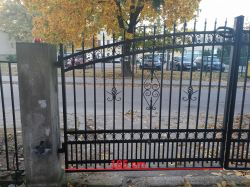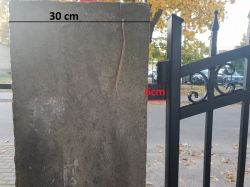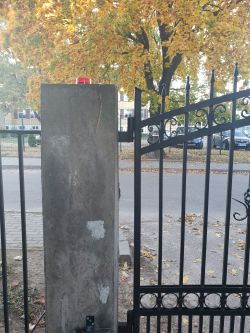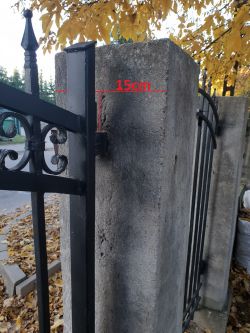FAQ
TL;DR: For 30 cm posts, choose long‑throw actuators: FAAC 414 long gives ~50 cm travel; "They won't be too long." S418/G‑BAT long have ~40 cm travel and can work near geometry limits. [Elektroda, kotbury, post #17493825]
Why it matters: Picking the right stroke prevents slow openings, binding, and premature wear on thick posts.
Quick-Facts
- On 30 cm posts, a 400 mm stroke may be insufficient without post undercutting; plan geometry carefully. [Elektroda, Marek J., post #17532749]
- FAAC 414 long ≈ 500 mm travel; FAAC S418 and GENIUS G‑BAT long ≈ 400 mm; standard units can be too short. [Elektroda, kotbury, post #17493825]
- BFT Kustos stroke: A25 = 295 mm; A40 = 355 mm; verify fit before buying. [Elektroda, Marek J., post #17509638]
- Underground drives: 6°/s max; ~15–20 s to 90°, minimal visible hardware, lower damage/theft risk. [Elektroda, Felini, post #17493733]
- Cost guide: underground gear ~PLN 7,000; turnkey ~PLN 9,000; tubular install ~PLN 2,500–3,000. [Elektroda, andrzej lukaszewicz, post #17532096]
Quick Facts
- On 30 cm posts, a 400 mm stroke may be insufficient without post undercutting; plan geometry carefully. [Elektroda, Marek J., post #17532749]
- FAAC 414 long ≈ 500 mm travel; FAAC S418 and GENIUS G‑BAT long ≈ 400 mm; standard units can be too short. [Elektroda, kotbury, post #17493825]
- BFT Kustos stroke: A25 = 295 mm; A40 = 355 mm; verify fit before buying. [Elektroda, Marek J., post #17509638]
- Underground drives: 6°/s max; ~15–20 s to 90°, minimal visible hardware, lower damage/theft risk. [Elektroda, Felini, post #17493733]
- Cost guide: underground gear ~PLN 7,000; turnkey ~PLN 9,000; tubular install ~PLN 2,500–3,000. [Elektroda, andrzej lukaszewicz, post #17532096]
Which drive is best for my 30 cm posts: FAAC S418, FAAC 414, or G‑BAT 300?
Choose a long‑throw unit. FAAC 414 long (~50 cm travel) is the safer pick for thick posts. FAAC S418 and G‑BAT long (~40 cm) can still close but operate nearer geometry limits. Expect mounting dimensions around 20 cm or more. “They won’t be too long.” [Elektroda, kotbury, post #17493825]
Will these actuators be too long for 1.85 m gate leaves?
No. On thick, 30 cm posts, standard actuators may be too short, not too long. Long versions give the geometry you need without binding. FAAC 414 long and long‑travel S418/G‑BAT are appropriate choices here. [Elektroda, kotbury, post #17493825]
Is 400 mm travel enough on 30 cm posts?
It may be too little unless you undercut/notch the post. Limited stroke forces compromised geometry and increases strain. That can hurt reliability and smooth motion. Consider a longer travel model if you cannot modify the post. [Elektroda, Marek J., post #17532749]
What does A ≈ B mean and why does it matter for linear actuators?
Installers target similar A and B dimensions to keep forces balanced and motion smooth. Mis‑matched A and B increase stress and reduce reliability. Expert note: “A dimension should be similar to the B dimension.” Prioritize bracket placement to achieve that relationship. [Elektroda, Marek J., post #17533073]
How fast can a quality drive open a 90° swing gate?
An underground example from Tousek reaches 6°/s, so 90° takes about 15–20 seconds. Underground units also keep hardware hidden with a “very low risk of mechanical damage.” Above‑ground speeds vary by model, but geometry still governs smoothness. [Elektroda, Felini, post #17493733]
Do BFT Kustos A25 or A40 fit my gate geometry?
Kustos A25 has 295 mm stroke and A40 has 355 mm. Given that travel, an experienced installer doubted they would function properly for the stated parameters. Verify geometry before committing to these shorter‑stroke options. [Elektroda, Marek J., post #17509638]
Can I automate a double‑leaf gate for under PLN 2,000?
Installed tubular systems typically run PLN 2,500–3,000 including labor and wiring. Underground packages land around PLN 7,000 for gear and ~PLN 9,000 turnkey. A PLN 2,000 budget fits parts‑only or DIY scenarios, not full professional installation. [Elektroda, andrzej lukaszewicz, post #17532096]
How do I size and mount the actuators correctly?
Follow this quick method:
- Measure and set your target A and B distances from hinge to actuator axes.
- Choose brackets and mounting points that keep A ≈ B through the swing.
- Test the full travel for clearance, then fix brackets in those positions.
“ A dimension should be similar to the B dimension.” [Elektroda, Marek J., post #17533073]
Do I need to shorten the post brackets on a 30 cm pillar?
Yes, when needed for clearance and better geometry. Shorten the post‑side brackets so they don’t touch the pillar corner, rather than using stock lengths. This helps you achieve the required mounting distances cleanly. [Elektroda, andrzej lukaszewicz, post #17534174]
What mounting dimensions should I plan for on thick posts?
Expect A and B mounting dimensions around 20 cm or more when posts are thick. That pushes you toward longer‑stroke actuators to keep geometry within recommended ranges and avoid binding. [Elektroda, kotbury, post #17493825]
Why might standard‑length actuators struggle here?
Standard units can be too short for thick pillars, forcing poor geometry. Long‑stroke models provide the reach to maintain A ≈ B. As one pro put it, “standard ones might be too short.” [Elektroda, kotbury, post #17493825]
Are underground drives worth it besides the clean look?
They hide mechanisms, reduce damage/theft risk, and can be quick (e.g., 6°/s to 90° in 15–20 s). Their prices are usually higher than above‑ground drives, so weigh aesthetics and durability benefits against budget. [Elektroda, Felini, post #17493733]











